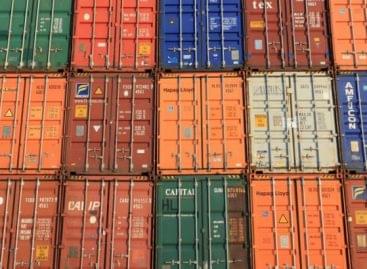Are we on the verge of an egg crisis?
Both the American and European markets are experiencing price increases – Hungarian consumers are not immune to the price hikes either.
 The rise in egg prices is a global phenomenon: production and consumption are decreasing in the United States, exports are increasing in Europe, while imports have fallen significantly in Hungary, and all categories are becoming more expensive. Behind the trend are global supply and cost structure changes, the effects of which are only now starting to be felt.
The rise in egg prices is a global phenomenon: production and consumption are decreasing in the United States, exports are increasing in Europe, while imports have fallen significantly in Hungary, and all categories are becoming more expensive. Behind the trend are global supply and cost structure changes, the effects of which are only now starting to be felt.
America is producing and consuming fewer eggs
According to the latest forecast from the United States Department of Agriculture (USDA) for June 2025, the country’s egg production is expected to be 3 percent lower in the third quarter compared to the same period of the previous year. On an annual basis, the decrease could reach 5 percent.
The supply shortage is also reflected in consumption: per capita egg consumption estimated for the third quarter of 2025 could decrease by 2 percent, while for the year as a whole it could fall by 4 percent compared to 2024 levels.
Europe: growing exports, rising prices
The European Union egg market is not immune to changes, but different processes are taking place here: in the first two months of 2025, the EU27 continued to operate as net exporters of eggs and egg products. Although imports increased significantly – by 59.5 percent – they still fell short of exports, which reached 63 thousand tonnes, with an annual increase of 3 percent. The main target markets continue to be the United Kingdom, Japan and Switzerland.
At the same time, the packing house price of table eggs also increased significantly: in the first twenty-four weeks of 2025, it was 261 euros per 100 kilograms, which represents a 19 percent increase compared to the same period of the previous year.
Hungary: falling imports, rising prices
The Hungarian egg market is also adapting to international trends: according to data from the Central Statistical Office (KSH), in the first four months of 2025, our country purchased about 7 thousand tons of shell eggs from abroad, which represents a 30 percent decrease compared to the same period in 2024. Fresh egg imports shrank by 13 percent, to 5.8 thousand tons.
Meanwhile, shell egg exports also declined (by 26 percent, to 3.6 thousand tons), but fresh egg exports grew dynamically: they jumped by 58 percent to 638 tons.
Related news
Univer is building on export-led growth
🎧 Hallgasd a cikket: Lejátszás Szünet Folytatás Leállítás Nyelv: Auto…
Read more >Hungarian exports are gaining new momentum: medium-sized companies are increasingly managing exchange rate risk and opening up to new markets
🎧 Hallgasd a cikket: Lejátszás Szünet Folytatás Leállítás Nyelv: Auto…
Read more >KSH: the foreign trade surplus in goods was 713 million euros in October; the volume of exports was 3.1 percent lower, and that of imports was 1.1 percent higher than in the same period of the previous year
🎧 Hallgasd a cikket: Lejátszás Szünet Folytatás Leállítás Nyelv: Auto…
Read more >Related news
(HU) Idei győztes sorrend: Grand Automotive East, Tesco Magyarország, Nestlé Hungária
🎧 Hallgasd a cikket: Lejátszás Szünet Folytatás Leállítás Nyelv: Auto…
Read more >Bagels, stuffed cabbage and online scams – this could be the Christmas menu for many due to the rise in cybercrime
🎧 Hallgasd a cikket: Lejátszás Szünet Folytatás Leállítás Nyelv: Auto…
Read more >25,000 packages of donations will reach people in need as a result of the 2025 Joy of Giving! fundraising campaign
🎧 Hallgasd a cikket: Lejátszás Szünet Folytatás Leállítás Nyelv: Auto…
Read more >






